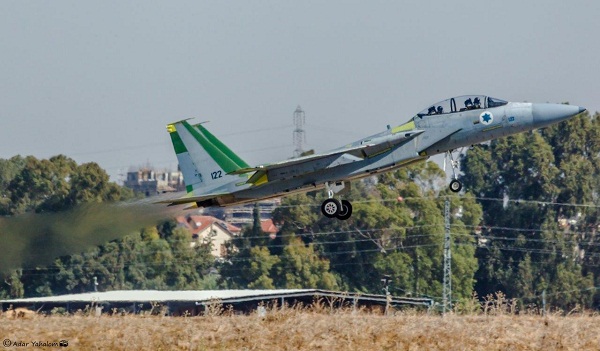The F-15’s central and rear parts were damaged beyond repair, according to the first accident report
A badly damaged Israeli Air Force (IAF) dual-seater F-15 Baz (Falcon, as the F-15 Eagle is dubbed by IAF) fighter jet returned to service with parts coming from a single-seater F-15.
The aircraft, which belonged to the “Edge of the Spear” Squadron, took off from Tel-Nof AFB in June 2011 and was hit by a flock of pelicans when it reached 3,000 feet. Its crew immediately attempted an emergency landing, severely damaging the aircraft’s rear area.
The F-15’s middle and back sections were destroyed beyond repair as a result of the engine burning, according to the first accident report.
According to Iaf.org.il, the Aerial Maintenance Unit (AMU) employees who have worked on the plane since 2014 discovered a solution to get it back in the air by removing the damaged twin-forward seater’s fuselage section and connecting it to a single-seat F-15 that has been in storage for 20 years. “A single-seater F-15 jet, tail number 314, was in storage at Ovda AFB. We removed its cockpit and connected the cockpit of the two-seater to the fuselage of the older F-15. The cockpit of the two-seater is more advanced and includes all of the upgrades performed in the IAF’s new jets,” said Lt. Col. Maxim Orgad, Commander of the AMU’s Engineering Department. Despite the fact that they are both F-15s, the aircraft are not identical, making the connection between them unclear, as Orgad pointed out. “It was a borderline impossible job; we had to map every wire and understand where they fit and which system they belong to.”
In August 2016, the fully rebuilt Baz completed its final series of tests in the AMU before being transferred to the IAF Flight Test Center (FTC), where the F-15 completed its first test flight, as shown in the photo in this post. Lt. Col. Rotem, who was also the mishap pilot during the bird attack, piloted the plane.
The jet returned to service after the flying testing was finished.
The restoration of the F-15, according to Lt. Col. Orgad, was a difficult yet rewarding task. “This is a challenging project engineering-wise. We studied the jet’s systems and structure and figured out the correct solution. In addition, this project gives the engineers pride and motivation. They built a jet from scratch.”
It’s worth noting that this wasn’t the only “Frankenstein conversion”: on September 21, 2009, the Finnish Air Force presented an F-18D Hornet, serially NH-468, which was built from a single-seat F-18C seriously damaged in a mid-air collision.
The “FrankenHornet” was tragically lost during flight testing on January 21, 2010.
Photo by Adar Yahalom via Israeli Air Force website

